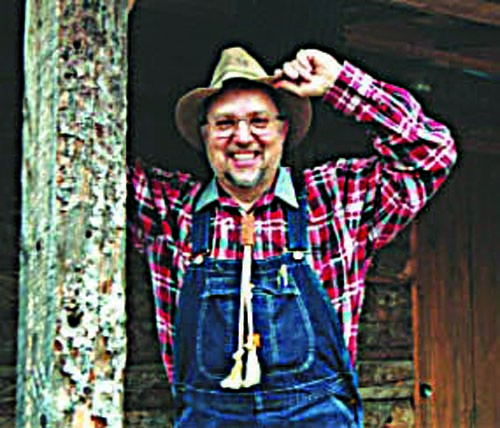I’ve been reading lately about the possibility of a global food shortage because of a scarcity of various kinds of fertilizer, global warming, drought, fuel-prices, etc.
I wuz contemplating that serious question for humanity yesterday when I wuz mowing our lawn — which is overgrown with dandelions. As I watched the fuzzy dandelion seed heads poof into the air as I drove over them and then accumulate three inches deep on the mower deck, suddenly the solution to global food security dawned on me.
Dandelions are the key to global food security. Think about it. Dandelions will grow prolifically about anywhere in any kind of soil, under any kind of weather conditions, and with no fertilizer needed for a bumper crop.
They are a perennial nearly impossible to kill or eradicate unless a person wants to spend an unwarranted and inordinate amount of time and money buying and applying the correct herbicide at precisely the proper moment. Dandelions are impossible to crowd out. They have a tap root that goes to infinity.
But, the key feature about dandelions is their ability to put on a mature seed head overnight — with a gazillion of ripe seeds — and the seed-head stick out like a sore thumb just asking to be easily harvested.
So, with all the progress of sequencing the entire genomes of many plants and animals — humans included — why don’t, I thought to myself, geneticists sequence the entire genome of dandelions and isolate all of the traits that would be useful in food crops — early maturity, hardiness, adaptability, harvest ease.
I mean, how difficult would it be, with the advancement of gene splicing and gene transfer, for scientists to put useful dandelions genes into food and fiber crops like wheat, corn, grain sorghum, rice, oats, barley, and cotton?
If scientists can genetically manipulate pig and human genes to make it possible to transplant pig organs into humans, how difficult could it be to splice the dandelion traits for overnight seed maturity on a stiff, upright, easily-harvested stalk into all the various kinds of wheat?
Just think about it. With the new “dande-wheats,” after a few days of wheat head blooming and pollenating, “voila,” overnight the wheat field transforms into a field of mature wheat, each head having hundreds of kernels, and each head sticking up in the air like dandelions do. Why, the “dande-wheat” could be harvested without a cutter bart on the combine. If the “dande-wheat” harvests as easily as dandelion heads, all a farmer would need to do is drive his combine through the field with the combine reel knocking the seed into the header and feeder auger.
The same scenario would work for other grains. And, imagine how much easier it would be to grow and harvest cotton with all the bolls maturing overnight and sticking up in the air waiting for the stripper to harvest them?
***
And, while I’m on this gene transfer subject for food crops, let’s go another route with
another undesirable plant — sericea lespedeza.
It’s not well known that sericea contains allelopathic chemicals. These chemicals tend to inhibit the germination of other plants around the sericea plant. Walnut trees do the same thing.
However, think about how useful it would be to have the allelopathic traits in sericea gene spliced into regular crops like corn or small grains. It would eliminate the need for expensive herbicides for weed control in the crop.
***
Geneticists just need to get more creative. Surely, the trait of “stickiness” on sticktight plants should have some agro or industrial application. Same for the genetic trait of “stickiness” of cocklebur seeds. Perhaps scientists could create a new agricultural crop to grow natural Velcro just by gene splicing some cocklebur genes into okra plants. To me the opportunities for agro gene manipulation are wide open.
***
Another good friend, the retired carpenter, ol’ Sawyer Bord from Colorado, stopped by for a couple days of fishing. The fishing wuz something less than average, but we still managed to catch enough crappie, bass, and bluegills to make it interesting. Plus, it’s always a pleasure to me to exchange BS and stories with a like-minded old geezer.
One thing happened while I wuz fishing that will make some folks laugh and other’s skin crawl. The second day of fishing the wind wuz howling out of the northwest and it wuz plum chilly and the water cold.
I wuz casting from the bank behind a cedar tree windbreak when I spied a big green water snake. It wuz laying quiet right along the water edge, quite sluggish at the temperature. So, in a moment of mental weakness, I wondered if the snake would bite my plastic lure if I dragged it past the snake’s head.
I figgered nuthin’ would happen. But, to my surprise and regret, the snake snapped up the lure first time. Now, I had a problem on my hands, or more precisely, on my fishing pole. I managed to reel the snake close to me. Then I had to step on its wriggling neck to extract the hook with my pliers. But, by then, the snake had wrapped around my lower leg and emitted its putrid snake smell. Yuk!
I easily got the hook out and the snake eagerly unwrapped itself from my now-stinky pants leg and took a dive into the pond.
Words of wisdom for the week: “Let a resting snake rest.” Have a good ‘un.





